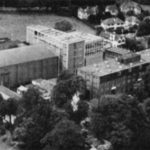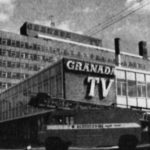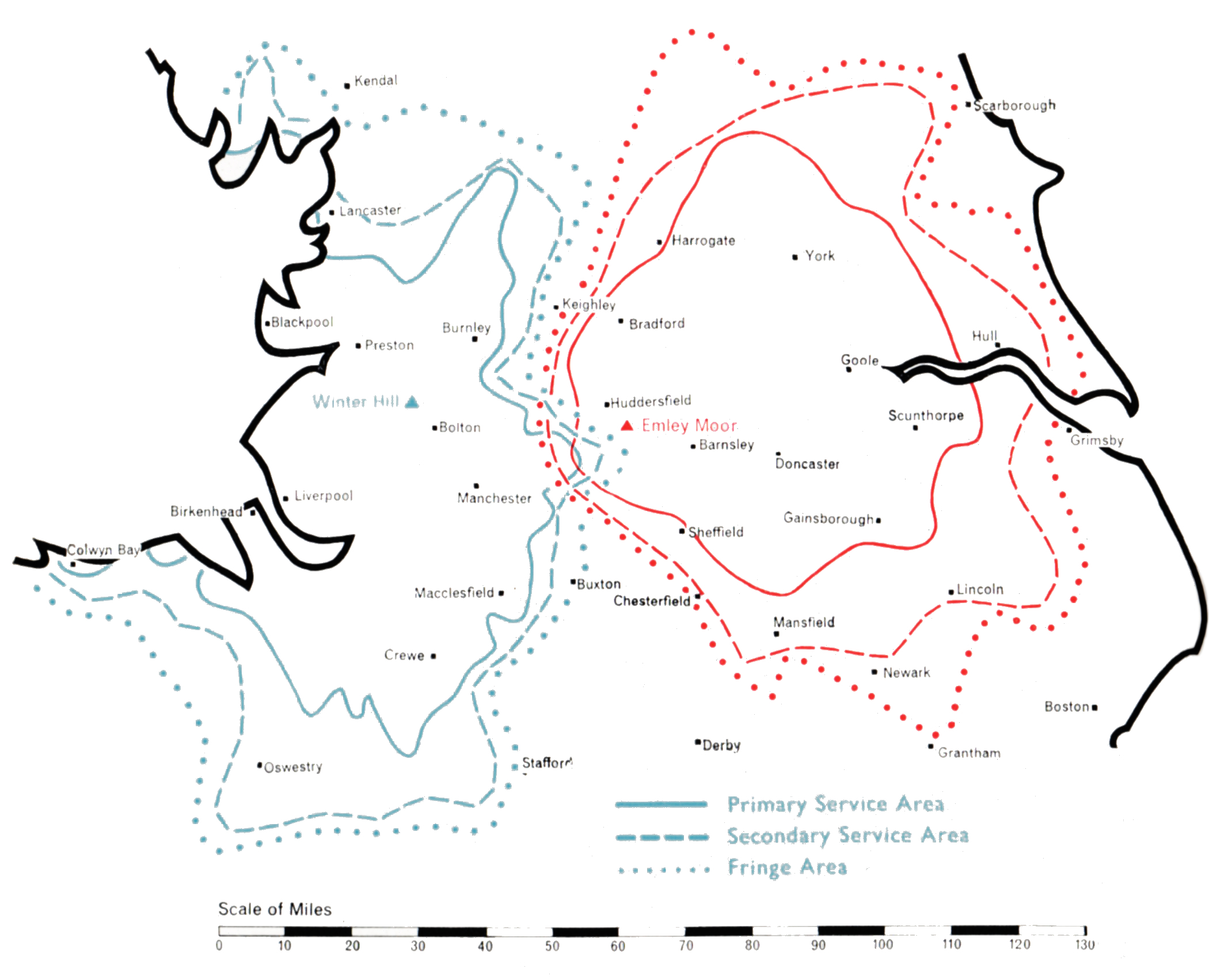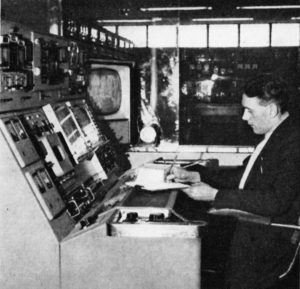Midlands and North (Saturdays and Sundays)

ABC is the company which, under agreement with the Independent Television Authority, provides the television programmes in the North and Midlands on Saturdays and Sundays.
 1 Hanover Square, London W.1.
1 Hanover Square, London W.1.
HYDe Park 7222
City Centre House, 30 Union Street, Birmingham 2
MIDLANDS 6083
Television House, 12 Mount Street, Manchester 2
DEANSGATE 4597
Area ITA Channel Vision Sound Opening Date Population ITA Homes
Transmitter Frequency Frequency 000's 000's
Mc/s Mc/s
Midlands Lichfield 8 189.75 186.25 17th Feb 1956 8,850 1,765
North Winter Hill 9 194.75 181.25 3rd May 1956 }
Emley Moor 10 199.7372 196.2605 3rd Nov 1956 } 12,452 3,282
Directors
Sir Philip Warter (Chairman); E G M Fletcher LL.D, MP (Deputy Chairman); Howard Thomas (Managing Director); C J Latta; R Clark, LL.B; D J Goodlatte; G A Cooper.
Officers
C J Orr, FCA (Secretary); B R Greenhead (Technical Controller); R H Norris (Advertisement Controller); B Tesler (Programme Controller); D Southwood (Northern Executive and Chief of Outside Broadcasts); E G Harris (Midlands Executive); L Shirley (Features Supervisor); R Taylor (Light Entertainment Supervisor); Penry Jones (Religious Adviser).
Staff
Total members of staff 957 (excluding Alpha Television).
Visits to Studios
A limited number of tickets are available for audiences at certain shows. Applications, enclosing stamped addressed envelopes, should be made to the Ticket Controller at the address of the studio from which the programme originates. The minimum age is sixteen.
Enquiries
Enquiries about artistes and programmes should be addressed to Viewers’ Correspondence, ABC Television, Broom Road, Teddington, Middlesex.
Submission of Scripts
Present requirements are for 60-minute plays, 30-minute children’s serials and 60- or 45-minute series scripts. But programmes change, and authors should contact story editors for the appropriate category to learn of future trends before submitting outlines or scripts.
Programme Journal
TV Times publishes separate editions for the North and Midlands areas giving details of the available programmes.
Studios
DIDSBURY STUDIO CENTRE, Manchester (Didsbury 8181). Winter Hill and Emley Moor transmitters receive their weekend programmes via the ABC master control rooms at Didsbury. Here too is based the Outside Broadcast fleet. The main studio has a stage area of 5,000 sq. ft. and has seating for an audience of 600. The second studio has an area of approximately 1,000 sq. ft., and there is a presentation studio attached to the dual master control rooms, plus an announcer’s booth for sound only.
BIRMINGHAM. Alpha Television Studios, Aston, Birmingham (Aston Cross 3091), are jointly owned by ABC and Associated TeleVision Limited. There are three studios of 3,000, 1,200 and 380 sq. ft., and master control and technical areas which were housed in a new building during 1962.
TEDDINGTON STUDIO CENTRE, Broom Road, Teddington (Teddington Lock 3252). This modern studio centre has been established close to London, where the main body of artistes is available. It specialises in the recording of drama, light entertainment and feature programmes. Studio 1 has an area of 7,500 sq. ft.; Studio 2, 4,750 sq. ft.; and Studio 3, 2,500 sq. ft. The technical equipment covers an area of 8,000 sq. ft. and is fully multi-standard with immediate switching between 405, 525 and 625 line standards. The new central block, opened in 1962, has in addition 13,000 sq. ft. of rehearsal rooms, an acoustically treated recording studio of 1,700 sq. ft., and scenery assembly and handling facilities.
Outside Broadcast Units
ABC have three Outside Broadcast units based at Didsbury, all with 4½” cameras and a smaller vidicon unit. In addition, the mobile videotape recorder can be equipped with one or two cameras, there being a total of twelve available between the units, There are seven microwave link units with portable power generators, and a hydraulic platform tower truck.
Videotape Recording
There are two machines based at Didsbury, together with the mobile unit. At Teddington there are four standards-switchable transistorised recorders together with standards converter equipment. At Alpha Studios, Birmingham, there are two machines.
Colour Television
One of the flying spot telecine channels at Teddington is equipped for the generation of colour signals, and programmes from Teddington have been experimentally radiated by the Croydon transmitter. In addition, numerous public demonstrations have been given over the GPO network, notably those using the continental SECAM system.
Technical Developments
A considerable amount of apparatus was specially developed for the Teddington Studio Centre in order to achieve full multi-standard operation. All this newly developed equipment is transistorised, and, in particular, vision switching matrices and pulse and vision distribution amplifiers have been used in considerable numbers.
Programmes
ABC productions include: News and News Magazines: ABC At Large. Talks, Discussions and Documentaries: The Other Man’s Farm, The Bookman. The Arts: Tempo. Science and Natural History: You’d Never Believe It! Religion: The Sunday Break, Living Your Life, Journey of a Lifetime, Sunday Morning Service, Epilogues. Adult Education: Headway. Sport: extensive outside broadcast coverage of all sporting events, including such minority sports as tenpin bowling, motor cycle scrambles, indoor soccer and amateur boxing. Children’s Programmes: Once Upon A Time. Drama Programmes: Armchair Theatre, The Avengers, Dimension of Fear (four-part thriller serial), Secret Beneath the Sea (six-part children’s serial), Ocean Liner series (untitled). Variety, Light Entertainment and Music: Thank Your Lucky Stars, Sing Along, The Best of Friends, Comedy Bandbox, Candid Camera, The Dave King Show, Life and Al Read. Entertainment Films: several film series produced in collaboration with ABC include The Human Jungle, Sir Francis Drake. Dramatised Documentaries: The Sword in the Web.




